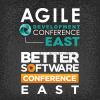 |
The Future of Agile: Dilution, Calcification, or Evolution?
Video
The agile revolution began more than a dozen years ago. It was started by a small band of rebels who had radical ideas, shared a common vision, and wanted to change the world by challenging the status quo. Where is that agile revolution today? Has it continued the vision of its founders? |
Jeff "Cheezy" Morgan
|
 |
Mock Objects: From Concept to Code
Slideshow
Mock objects are simulated objects that mimic the behavior of real objects in controlled ways. Because many code modules interact with external entities-things like databases, networks, file systems, third-party frameworks, and even the clock-these entities often cause us big-time trouble during unit testing. These entities can slow down our unit tests, produce unpredictable results, and have dangerous side effects. The best unit tests are decoupled from these external entities. Rather than try to control the entities, you can create mock objects to simulate their functionality. With a tangible example in the form of a short play, Rob Myers introduces mock objects and provides a brief history of their "relatives"-stubs and fakes. Then, with an animated, nearly-worst-case example, Rob presents code he developed to "mock out" nasty dependencies and create safe, predictable unit tests.
|
Rob Myers, Agile Institute
|
|
|
Back to the Basics: Principles for Constructing Quality Software
Slideshow
Using an analogy to the building codes followed by architects and contractors in the construction of buildings, Rick Spiewak explores the fundamental principles for developing and delivering high quality, mission-critical systems. Just as buildings are constructed using different materials and techniques, we use a variety of languages, methodologies, and tools to develop software. Although there is no formal "building code" for software, software projects should consider-and judiciously apply-the recognized "best" practices of static analysis, automated unit testing, code re-use, and peer reviews. Rick takes you on a deep dive into each of these techniques where you'll learn about their advantages, disadvantages, costs, challenges, and more.
|
Rick Spiewak, The MITRE Corporation
|

